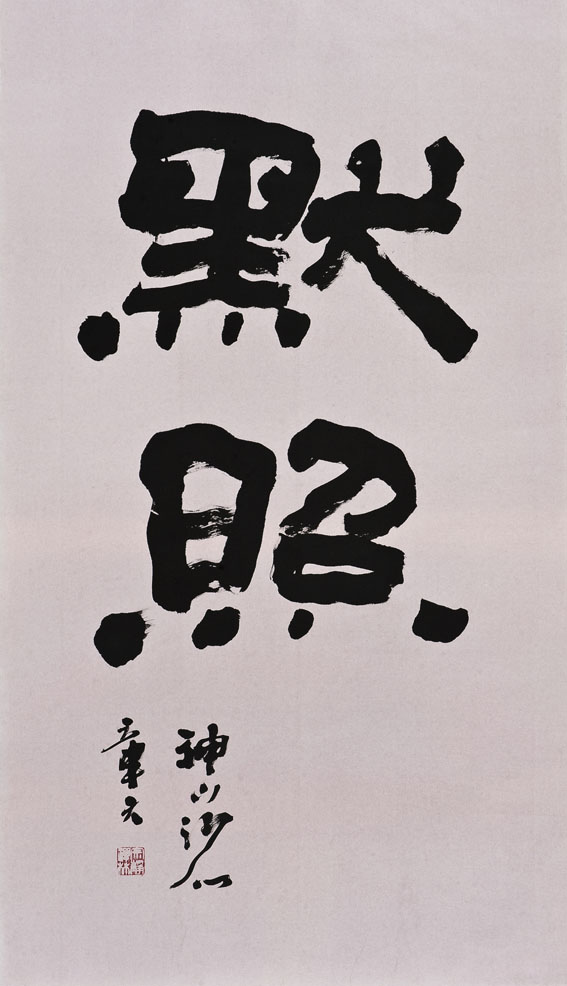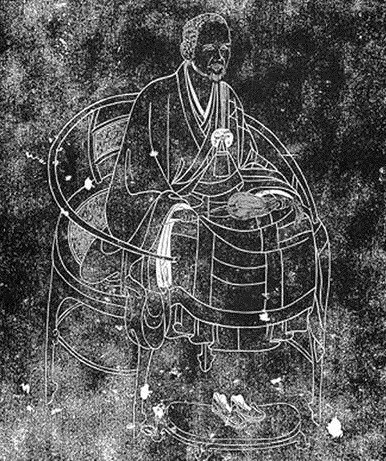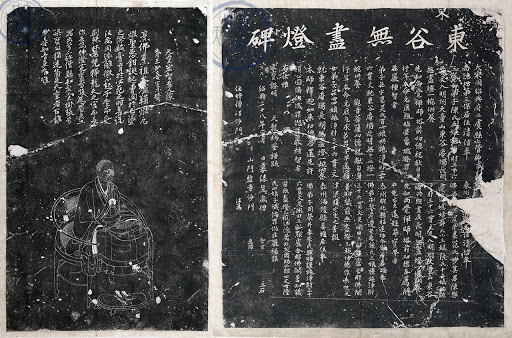The Cáodòng 曹洞 school is one of the Five Schools of Chán 禪 Buddhism. It was founded by Dòngshān Liángjiè 洞山良价 in the 9th century, and it was about to go extinct until it experienced a major resurgence during the Sòng 宋 dynasty, becoming one of the main schools of Chán.
In Japan, the Cáodòng school is known as Sōtō, and was introduced to the country in 1227 by the famous master Dōgen Zenji 道元禅師, having been to China and received the transmission from Tiāntóng Rújìng 天童如淨.
Although this school was characterized from its beginnings by emphasizing sitting meditation as the most important pillar of practice, it was not until the eleventh century that people began to speak of "Silent Illumination".

The term "Silent Illumination" (默照 mòzhào) refers to a form of meditation without object, that is, one in which no attention is paid to a specific phenomenon, called "anchor", such as breathing. Instead, meditation consists simply of sitting in a state of mindfulness. Therefore, this method is also called zhǐ guǎn dǎ zuò 只管打坐 "just sit in meditation").
Sometimes the term "Sudden Illumination" is used to refer to the Silent Illumination method, but we believe that this expression is inappropriate for two reasons. First, for not offering a correct translation of the word mò 默 ("calm", "quiet", "silent"), and secondly because it is derived from an erroneous understanding of the process of practice, which, according to the masters of the Cáodòng school, is gradual and progressive, requiring many hours of daily meditation to achieve enlightenment, and in no case is this seen as a breakthrough event.
The Silent Illumination method was heavily criticized by Dàhuì Zōnggǎo 大慧宗杲, a master of the Línjǐ 臨濟 school*.
The first Cáodòng master whose teachings approximate Silent Illumination is Fúróng Dàokǎi 芙蓉道楷 (1043-1118). Dàokǎi did not explicitly formulate this notion, but ensured that to experience the Buddha-nature (Sanskrit tathāgatagarbha; Chinese 如来藏 rúláizàng) it was not necessary to make a great effort, but simply to sit in meditation with a calm mind and determination.
It is Fúróng Dàokǎi who is due to the resurgence of the Cáodòng school during the Sòng dynasty, when it was almost extinct.
The first Chán master to speak explicitly of "Silent Illumination" was Hóngzhì Zhēngjué 宏智正覺 (1091–1157). The writings about him and the records of his sermons are extensive. Among them, a long poem written by himself stands out, entitled mò zhào míng 默照銘, in which he exposes his way of understanding meditation and enlightenment. Although it is not clear that this poem is subsequent to Dàhuì's criticism to the Cáodòng school, some authors believe that Hóngzhì would write it in response to it.

Master Hóngzhì Zhēngjué 宏智正覺.
Hóngzhì says that the total clarity of the Buddha-nature, which is inherent in all beings, will simply manifest itself during meditation, leaving aside all conceptual thought. This meditation entails abandoning attention to a specific focus to encompass the whole reality as an undifferentiated One. It is a matter of abandoning the common, conceptual and dualistic thinking, which discriminates the reality by differentiating between subject and object, a discrimination that here is understood as artificial. In this way, the practitioner would merge with the rest of the universe in meditation, rather than setting it aside as it happens by concentrating on a particular phenomenon.
However, the same purpose of attaining enlightenment must be abandoned, as it is a form of attachment. This enlightenment is actually the natural state of all beings, but it is only evident when dualistic conceptual thinking is abandoned.
According to Hóngzhì, enlightenment is already present in all beings, but obstructed by desires and attachments; the method of freeing yourself from these obstructions is simply sitting meditation, an essential practice for the realization of one's own Buddha-nature. To do this, long hours of meditation are necessary, following the example of Bodhidharma (菩提達摩 Pútídámó), of whom it is said to have spent nine years meditating in front of the wall of a cave.
While there are no written references to the idea of Silent Illumination prior to Hóngzhì, he ensures that it is the fundamental teaching of the Cáodòng school. Dàhuì Zōnggǎo, in his criticism to the school, distorted the concept of Silent Illumination. The Cáodòng school did not propose anything radically different from the other schools of Chán; it simply gave greater value to a meditative practice that was common to all of them. Its fundamental teaching, that all beings already possess the Buddha-nature, is a general basic premise to all branches of Chán Buddhism. However, it is Hóngzhì's emphasis that, being the buddhic nature inherent in all beings, there is nothing to be done to attain enlightenment, that provoked the criticisms of Dàhuì, who emphasized the importance of seeking it.

Despite the differences between schools, Hóngzhì's ideas were quite successful among the literati of the time, whose sponsorship and support Buddhist schools were dependent on, which was probably one of the most important reasons for the onslaught of Dàhuì against the Cáodòng school.
Dàhuì was quite successful in discrediting the idea of Silent Illumination, and managed to get its own school to be seen by its contemporaries as the Orthodox branch of Chán, when in fact his Kànhuà 看話 system was considerably less orthodox than that proposed by Hóngzhì, as it was an innovation in the meditative techniques of the time.
After Hóngzhì, the concept of Silent Illumination disappears from the vocabulary used by the masters of the Cáodòng school, at least in the written material available. Subsequent editors may have deleted the references in the texts, or simply the masters abandoned the use of this term. However, the later Cáodòng tradition greatly extols the Buddha-nature inherent in all beings, emphasizes sitting meditation as the way to realize it, and promotes an inclusive mindfulness in all everyday activities.
Notas:
* For more information on Dàhuì you can consult our article Gong’an and the Kanhua System of Meditation.
